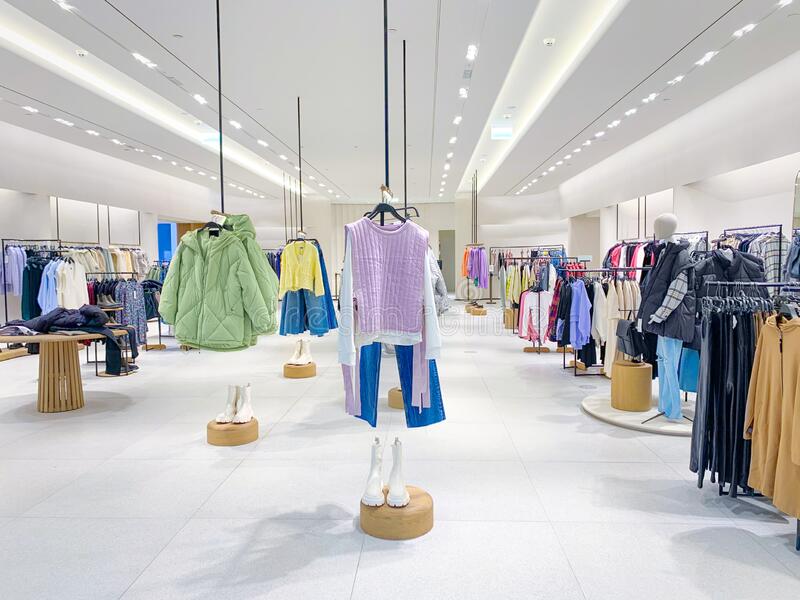Sitting front row at Paris Fashion Week last fall, waiting for a show to start, Lucky editor-in-chief Eva Chen overheard someone behind her let out a rather exasperated sigh. “God, if I see one more pink coat!” The statement was not pointed directly at her, but it was a throwing down of the fashion gauntlet nonetheless.
Yes, it was the season of that coat. You know the one - Carven’s cotton-candy colored confection, with an oversized collar and perfect belt tie. It seemed to be draped around the shoulders of practically every cool girl in the business and pictured in countless magazines as an essential of the season. There was an electric excitement and buzz surrounding it. It was “It,” so to speak.
So what makes something reach this kind of fever pitch? Outside of just generally being original and unique, there’s a strange alchemy that launches certain pieces—Birkenstocks, Céline bags, Isabel Marant wedge sneakers —into the trend stratosphere. “It has to have a reason to be,” says Roopal Patel, founder of Roopal Patel Consulting. “I think that’s what really constitutes an It item these days: What is it adding to the cultural space? What is it adding into a woman’s wardrobe?”
Well, in the case of Birkenstocks, that would be comfort and a subversion of traditional femininity; Céline bags, a form of understated luxury; the Marants, height disguised in a casual shoe. But that’s not to say purchasing these things is an exercise in wear-it-forever practicality—were it so, those very same Marants would not currently be languishing in my closet, literally collecting cobwebs. “'It' items tend to evoke a very emotional response from the consumer, which sometimes throws all reason out the window,” says Patel. “I think every woman could say she’s bought one on impulse and then been like, ‘Oh, OK, now what I am going to do with this? How am I going to wear it?’”
These precious pieces also don’t tend to last very long, at least in the so-called “fashion bubble,” i.e. among those who work in the industry (once again, see my languishing Marants). “I think most It items, they burn bright and they burn hot and fast and then kind of fade to a simmer,” says Chen. “I think what makes an It item is that it’s instantly recognizable and people immediately have a sense of time and feeling about it and what it stands for.” While this may be the desired effect at first, it also makes for quite the Catch-22. “That’s one of the downsides of an It item too, that people know exactly when it’s from—that it’s instantly identifiable can have an impact on longevity.”
But as far as what could create such desire on a mass level, one that causes shoppers to sometimes abandon all reason, well, it might be as simple as the age-old “I’ll have what she’s having” syndrome, only accelerated to warp speed because of onset of street style and digitization of fashion. “Thanks to the immediacy created by digital media, consumers are driven to purchase what they perceive as must-haves more than ever,” says Sheila Aimette, vice president of North American content at trend forecasting group WGSN. “Seeing an item worn by a certain group of people who are deemed ‘cool’ or ‘stylish’ helps create this appetite—social media exposes us very quickly to what is happening at that moment.”
Patel agrees. “It makes women and the consumer feel like they’re part of this club,” she says. “These items have a seal of approval on them. The designers have said, 'Yes, if you wear this, consider yourself fashionable.’ And in turn, magazines and editors are delivering the same message.”
While such insiders—be they editors, bloggers, celebrities or girls about town—may set the agenda for what trickles down to the masses, the early stages of the It game can be mini minefields fraught with precarious politics. Nowhere does this play out more prominently than during Fashion Week. When everyone’s outfit is so relentlessly documented, there’s a heavy premium put on the new and now (and, often, never again).
Chen recently relayed an anecdote in her May editor’s letter about how a photographer had approached her last September and said he thought it was “brave” that she was wearing identifiable pieces more than once. “I just lost it because that’s so lame,” she says. She, much like her readers, is not one to make fairweather fashion friends, but rather invest in something and find a million different ways to spin it. “I would say with most fashion people, usually the phenomenon and craze lasts for exactly one season. And that’s something to me, as a practical human being, I have a hard time with. I think if you truly love something, you should be able to wear it as long as you want and however you want.”
For street style photographer Phil Oh, it’s this kind of personal style that excites him these days, rather than simply capturing the latest in what’s appropriately called “street style bait” (though he does post some humorous roundups on his site, such as this one). “When I see It items, I snap a few photos just out of instinct,” he says. “But in the end, the photo ends up being about just the bag or the sweater and it gets a bit tiresome.” Instead, he’s more drawn to those who are able to incorporate them into a whole look. “It’s quite interesting when you see people wearing that same item but mixing it in as if it were just any ol’ piece out of their closet.” Case in point? Susie Bubble wearing Céline’s vivid brushstroke coat from spring 2014, which she paired with a color-blocked turtleneck and bag that picked up on the motif. “This is so cliché, but its like she’s wearing the coat and not just a walking hanger.



